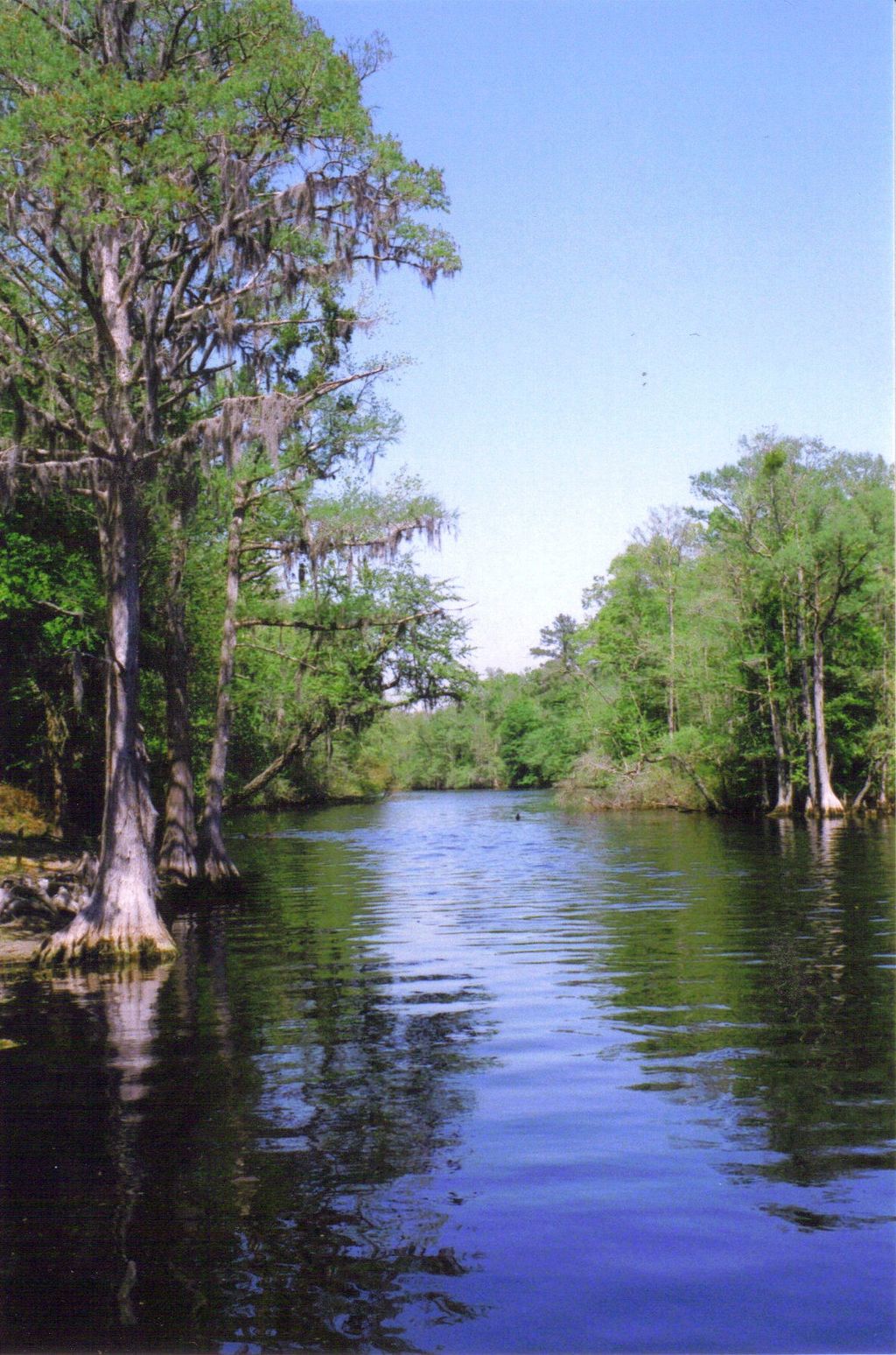Blackwater Rivers
Blackwater rivers are black due to the tannic acid leached from fallen leaves of trees that inhabit the extensive floodplains along the river’s edge. As the water rises and falls, nutrients, known as detritus, are pulled from decaying plant and animal matter. Detritus provides the fuel for the aquatic ecosystems in these rivers.
One of the other quintessential features of a blackwater river is they flow slowly and does not rise and fall rapidly, unlike other rivers.
Here is a list of the blackwater rivers that are found in the Carolinas:
- Ashepoo River: along with the Edisto and the Combahee Rivers in South Carolina makes up the ACE Basin National Wildlife Refuge.
- Black River: a tributary of the Pee Dee River in North and South Carolina
- Cape Fear River, North Carolina: flows into the Atlantic Ocean.
- Cashie River, North Carolina: flows into Albemarle Sound.
- Chowan River, North Carolina: flows into Albemarle Sound.
- Edisto River, South Carolina: flows into the Atlantic Ocean.
- Four Hole Swamp, a tributary of the Edisto River in South Carolina.
- Great Coharie Creek, North Carolina: flows into the Black River.
- Little Pee Dee River, South Carolina: flows into the Pee Dee River.
- Lynches River, South Carolina: flows into the Pee Dee River.
- Lumber/Drowning Creek: located in North and South Carolina. Part of Lumber River State Park
- Scuppernong River: a small river in Washington and Tyrrell Counties in eastern North Carolina at Pettigrew State Park
- Upper Little River, North Carolina: flows into the Cape Fear River.
- Waccamaw River, North and South Carolina: flows into the Atlantic Ocean.
- White Oak River, North Carolina: flows into the Atlantic Ocean.

Lumber River - Source: Wikimedia Commons